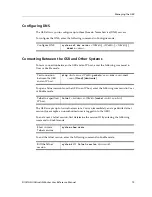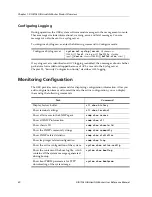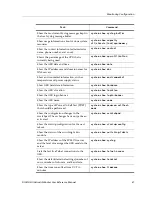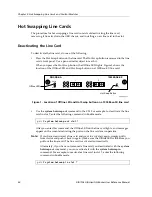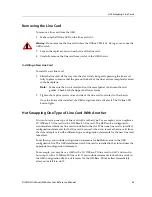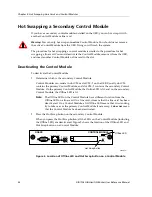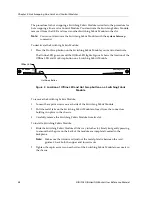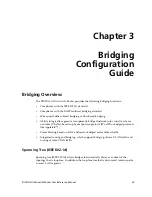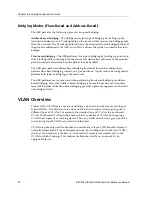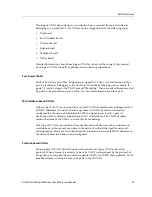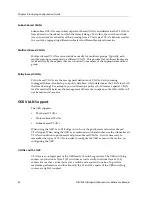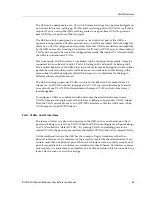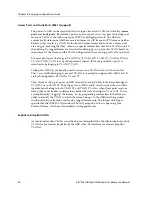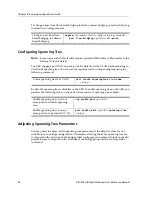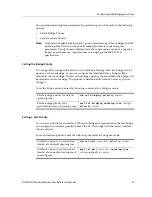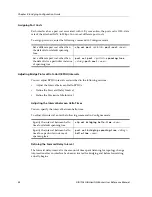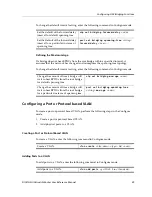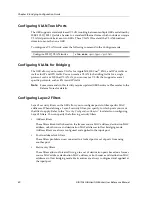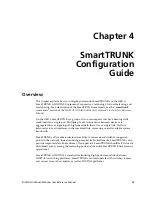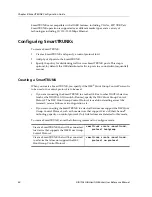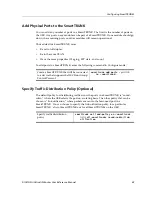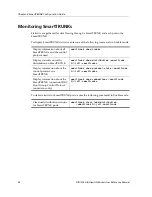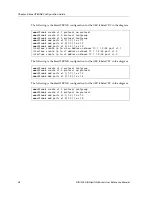
DIGITAL GIGAswitch/Router User Reference Manual
33
VLAN Overview
The GSR can be used purely as an L2 switch. Frames arriving at any port are bridged and
not routed. In this case, setting up VLANs and associating ports with VLANs is all that is
required. You can set up the GSR switching router to use port-based VLANs, protocol-
based VLANs, or a mixture of the two types.
The GSR can also be used purely as a router, i.e., each physical port of the GSR is a
separate routing interface. Packets received at any interface are routed and not bridged. In
this case, no VLAN configuration is required. Note that VLANs are still created implicitly
by the GSR as a result of creating L3 interfaces for IP and/or IPX. However, these implicit
VLANs do not need to be created or configured manually. The implicit VLANs created by
the GSR are subnet-based VLANs.
Most commonly, a GSR is used as a combined switch and router. For example, it may be
connected to two subnets S1 and S2. Ports 1-8 belong to S1 and ports 9-16 belong to S2.
The required behavior of the GSR is that intra-subnet frames be bridged and inter-subnet
packets be routed. In other words, traffic between two workstations that belong to the
same subnet should be bridged, and traffic between two workstations that belong to
different subnets should be routed.
The GSR switching routers use VLANs to achieve this behavior. This means that a L3
subnet (i.e., an IP or IPX subnet) is mapped to a VLAN. A given subnet maps to exactly
one and only one VLAN. With this definition, the terms
VLAN
and
subnet
are almost
interchangeable.
To configure a GSR as a combined switch and router, the administrator must create
VLANs whenever multiple ports of the GSR are to belong to a particular VLAN/subnet.
Then the VLAN must be
bound to
an L3 (IP/IPX) interface so that the GSR knows which
VLAN maps to which IP/IPX subnet.
Ports, VLANs, and L3 Interfaces
The term
port
refers to a physical connector on the GSR, such as an ethernet port. Each
port must belong to at least one VLAN. When the GSR is unconfigured, each port belongs
to a VLAN called the “default VLAN”. By creating VLANs and adding ports to the
created VLANs, the ports are moved from the default VLAN to the newly created VLANs.
Unlike traditional routers, the GSR has the concept of logical interfaces rather than
physical interfaces. An L3 interface is a logical entity created by the administrator. It can
contain more than one physical port. When an L3 interface contains exactly one physical
port, it is equivalent to an interface on a traditional router. When an L3 interface contains
several ports, it is equivalent to an interface of a traditional router which is connected to a
layer-2 device such as a switch or bridge.

